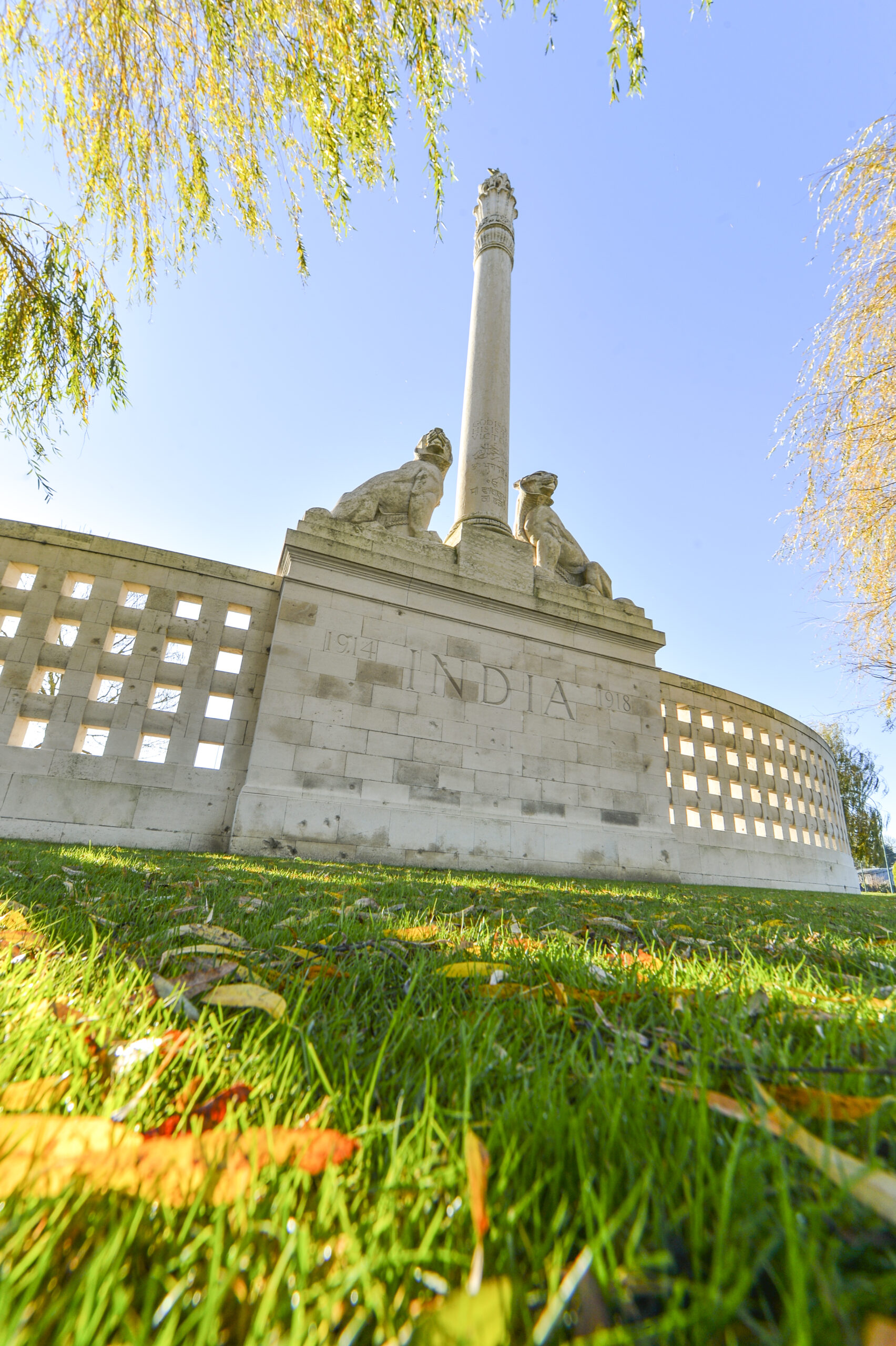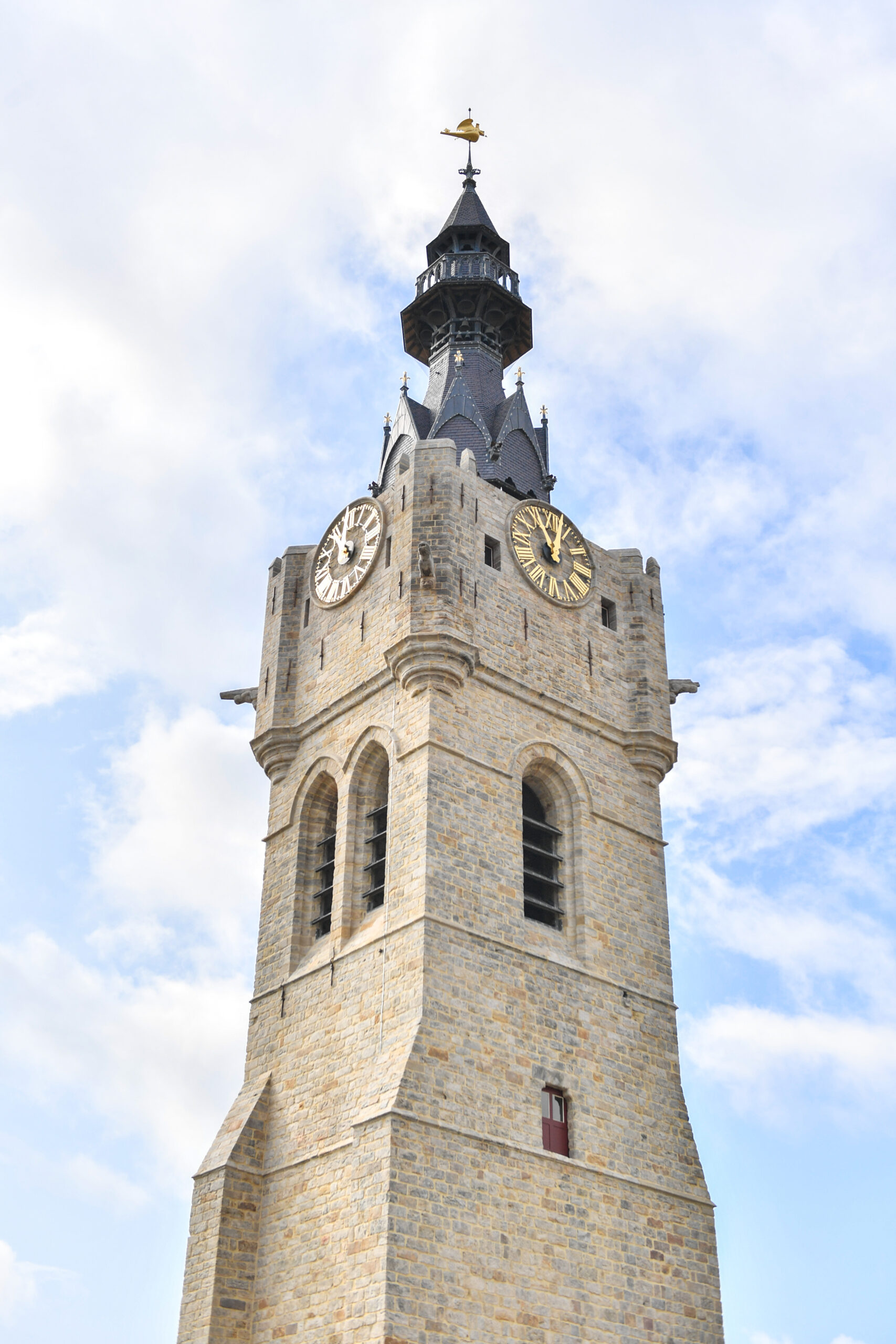British and Béthune: so much shared history
As for so many of the towns of the Pas-de-Calais region, Béthune, just an hour’s drive from the port of Calais, is shaped and marked by great historic events, industrial landscapes, and fine architecture. (H2) This area of northern France has been fought over for centuries, culminating in the two momentous and destructive 20th-century wars, to which the numerous memorials and graves pay such stark testimony to. The area’s subterranean world, with the richest coalfields in France, drove the nation’s own industrial revolution, scarring the landscape in the process whilst building a growing whole communities of workers, whose fortunes ebbed and flowed as world events consumed them and industries came and went.
Our common history
It is in towns like Béthune that British visitors can find so much shared history; social, industrial and world alike. These towns housed, nursed and, sadly too often, laid to rest so many British and Commonwealth soldiers, men and women, of many religions, citizens of dozens of nations. Casualties of events who now lie in the vast and small graveyards, often side by side with the local French comrades, party to the same fate. The catastrophic events of 1918 and 1940 in particular are, perhaps ironically, responsible for the stunning architecture of the town centres, rebuilt in flamboyant art deco and Flemish styles. And the vast coalfields, and the miners that toiled in them, created the environment, and resources, to drive huge social change. Bringing the neat industrial villages and towns, so resemblant of the British worker villages that also sprang up during the 19th century, and opulent structures to improve and enhance workers’ lives.
Wartime Béthune
Any visitor to Béthune will be moved by the town’s recent history. The legacy of The Great War and World War 2 is everywhere. During the First War the town was a major railway junction, the location for several hospitals and casualty clearing stations, and base for a huge garrison of Commonwealth soldiers, particularly from India and Canada. The town is marked by the destruction of the numerous shells that fell on it between 1914 and 1918, suffering badly in 1918 as the front-line moved backwards and forwards. The medieval belfry, now a Unesco World Heritage Site, was badly damaged and had to be restored. Today, from its top, you can enjoy a breathtaking view of the city, rebuilt in art deco style, and further afield to as far as the Belgian border. In the town centre, you will find a signposted walking route that takes you to the many locations associated with the British and Commonwealth presence. The 4.2 km-long urban route starts from the belfry, and leads to the hospitals, barracks, churches, and monuments that bear witness to the presence of the Allies.
Neuve-Chapelle Indian Memorial © Rémi Vimont
A few kilometres outside Béthune, the Indian Memorial in Neuve Chapelle is a Commonwealth monument with remarkable Indian-inspired architecture. On its curved walls are carved the names of the 4,700 Indian soldiers and labourers with no known grave, and in the centre, flanked by two tigers, a column is surmounted by the Star of India, a Lotus flower, and the Imperial Crown. The cemetery is located here because of the losses the Indians suffered during the nearby Battle of Neuve Chapelle, where in March 1915, over 3,000 Sikhs, Gurkhas, and Punjabis lost their lives.
At its unveiling in 1927, Marshal Foch told those attending to: “Return to your homes in the distant, sun-bathed East and proclaim how your countrymen drenched with their blood the cold northern land of France and Flanders.”
Just 100 metres away you will find the only Portuguese military cemetery in France. Built between 1924-1928, it is now the last resting place for over 1,800 troops of the Portuguese Expeditionary Force, most of them falling during the Battle of the Lys in April 1918. A total of 238 are unidentified.
The forgotten front
Béthune, away from the front, is a garrison town. Often referred to as the forgotten front, daily life in Bethune was nevertheless disrupted, with thousands of wounded troops brought back from the front to convalesce in the town. Hospitals were set up in the town’s colleges, and British ambulances brought back wounded soldiers from lesser-known battles such as Festubert and Givenchy-lès-la-Bassée. Having defended the town for four years, there are today many cemeteries and monuments around the town.
Rebuilt after the end of hostilities, Béthune again suffered badly in May 1940 as the advancing Germans drove the French forces and the BEF back to Dunkirk. The notably fierce defence of Béthune caused great destruction and led to one of the War’s most notorious massacres, when SS troops, angered by their losses, shot almost 100 prisoners of war from the Royal Norfolk Regiment at a farm in nearby Le Paradis. Today various memorials mark this dark event.
Grand’Place-Béthune © AS Flament
Visit the Grand Place of Béthune
The starting point for any visit to Béthune is its stunning central square, the Grand Place. Relax on the terrace of a café – of which there are many! – and take in the flamboyant facades of the houses. Entirely rebuilt in the art deco style between 1923 to 1927, Béthune offers a fascinating architectural mix around its Grand Place, sometimes of brick, sometimes of stone, you will be constantly surprised by this neo-regional architecture, rich in colour and eclectic adornment. The town is blessed with the – typical of the region – bars and brasseries, cheese and chocolate shops, delicatessens, breweries and patisseries that make spending time here so agréable! At the end of August, don’t miss the vibrant Béthune Rétro festival. With concerts, memorabilia, food and drink (mais oui!), and displays, this rockabilly-themed event brings classic cars, dancing, and celebration to the whole of Béthune.
Climb to the top of the Belfry
The fully restored belfry reopened in September 2021. Climb the steps to the top of this iconic city monument. The belfry is Unesco World Heritage listed, as are the other 23 listed belfries in the region. Dating from the Middle Ages, it was partially destroyed during The Great War when in 1918 the belfry and its carillon fell. Today, it has regained its spectacular appearance, this symbol of communal freedom built in 1346 is the beating heart of the city. Its bells ringing out their melodies every 30 minutes. Be sure to listen out for the the ch’ti children’s lullaby ‘min p’tit quinquin’ (my little darling).
Belfry-Béthune © Fanny Roussel-OT Béthune-Bruay
Art surprises in Béthune’s Bank of France
A playground for ultra-creative artists, the former Banque de France is now a cultural centre open to contemporary art. Artists are given free rein to transform the rooms of this once-secret lair into their own personal creations: vaults, counters, offices, and the director’s apartment…. There are no boundaries to creativity. Painting, video, sculpture, installations; let yourself be (very) surprised.
Cité des électriciens-Bruay-la-Buissière©lescoflocs
La Cité des Électriciens
As the vast coalfields were mined, and industries sprang up to serve them or be supplied by them, the new workers need to be housed and entertained, health needs to improve and citizen’s expectations from life rise inexorably. In Bruay la Buissière, the oldest remaining mining town in the region, a remarkable rehabilitation for one of these ‘worker towns’ has occurred, with its transformation into an interpretation centre, an artist’s residence and a gîte. The Cité des Électriciens (The Electricians City), an archetype of the mining city of the nineteenth century, is surely the near French cousin of notable British worker towns such as Port Sunlight, Bourneville and Saltaire. One of the key locations for the Danny Boon’s blockbuster film ‘Bienvenue chez les Ch’tis’ the interpretation centre, and free walking trail with interactive areas, tells you about the mining heritage and the men and women who shaped this exceptional landscape.
A splendid art deco swimming pool
Tired workers, many with raised expectations and higher wages, needed to be entertained. And the mine and factory managers need their men to keep fit. Across the region parks, hospitals, green spaces, and leisure facilities are built. The Piscine de Bruay-La-Buissière, close to the electrician’s city, is an art deco masterpiece of an open aired swimming pool. Built in the 1930s, with mining money, and in line with the social ideas of the Popular Front, notice the ranks of changing rooms, the towers, the glistening mosaics. The warm and inviting water of the huge main pool. The white walls and tiles reflecting the sun… on some days!
If the weather permits, a trip, or rather a plunge into, this art deco swimming pool is a refreshing way to explore industrial history. To imagine the joy of the working-class families able to benefit from such a grand pool; a testament and monument to their toil. Two pools are available for swimmers, with water heated to 29°. An exceptional setting for a few hours of paddling.
Art Déco swimming pool-Béthune © JM André
More dynamic towns to visit
Arras
Lens
Top ten city attractions
See, do, eat and more





